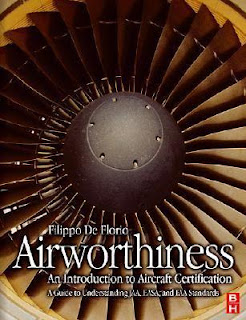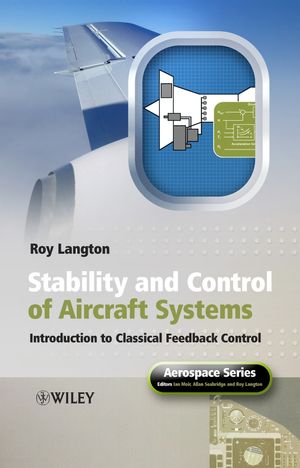This course included:
PPL 1- Air Law & Operational Procedures
PPL 2- Human Performance & Limitations
PPL 3- Navigation & Radio Aids
PPL 4- Aviation Meteorology
PPL 5- Aircraft General & Principles of Flight
PPL 6- Flight Performance & Planning
PPL 7- The Navigation Computer
PPL 8- Practical Flying Training
PPL 9- The IMC Rating & Instrument Flying
PPL 10- Night Qualification
Bonus: VFR RT Communications
PPL 1- Air Law & Operational Procedures This Air
Law course covers international (ICAO) as well as UK Air Law and Rules of the
Air. Thus, the course provides ideal preparation for exercising your PPL
privileges anywhere in the world. This excellent new Ground Study training
course has been created in partnership with Oxford Aviation and Transair Pilot
Shop. It is a classroom quality, interactive, multi-media training solution,
which is designed to radically improve standard teaching methods by using
brilliant 2D & 3D graphics, animations and photographs with written and
spoken instruction.
PPL 2- Human Performance & Limitations For a pilot,
the study of Human Performance and Limitations is crucial to an understanding
of the central role played by the human factor in promoting safety and
efficiency in flying operation This excellent new Ground Study training course
has been created in partnership with Oxford Aviation and Transair Pilot Shop.
It is a classroom quality, interactive, multi-media training solution, which is
designed to radically improve standard teaching methods by using brilliant 2D
& 3D graphics, animations and photographs with written and spoken
instruction.
PPL 3- Navigation & Radio Aids Our Navigation
course aims to teach you every element of the theory underlying flight planning
and the art of single-pilot navigation. Oxford’s CD-ROM on the CRP-1 navigation
computer is an essential accompaniment to this course. This excellent new
Ground Study training course has been created in partnership with Oxford
Aviation and Transair Pilot Shop. It is a classroom quality, interactive,
multi-media training solution, which is designed to radically improve standard
teaching methods by using brilliant 2D & 3D graphics, animations and
photographs with written and spoken instruction. All subjects are taught using
the latest computer based training technology (CBT) enabling you to learn more
effective and enjoyable than ever before. The depth and scope of all subjects
covered meet the syllabus requirements of the JAR-FCL PPL and the NPPL. The CBT
is graphically rich, comprising countless full colour photos and diagrams.
There are also numerous animations which aim to teach you the more difficult
concepts. All lessons are accompanied by a full audio teach and all chapters
have multiple choice, self-assessment questions which allow you to check your
progress through the course and to make your own judgement on your readiness to
sit the actual examination. In following this JAA PPL CBT theoretical knowledge
course, you will benefit from Oxford Aviation Training’s unsurpassed teaching
expertise and from the School’s considerable experience of having successfully
prepared thousands of students for JAA theory examinations.
PPL 4- Aviation Meteorology ( Meteorology The complete
Syllabus DVD) This highly informative film has been produced to be an
invaluable aid to anyone requiring an in-depth knowledge of all aspects of
weather conditions and their development in the context of pilot understanding
and training. Running time 120 mins.
PPL 5- Aircraft General & Principles of Flight
Aircraft General teaches you the theory and practice of all you need to
know about a modern light aircraft’s electrical, mechanical and hydraulic
systems, its engine, and its instrumentation. Principles of Flight comprises a
deep and comprehensive study of the science and mechanics of flight. The course
is aimed specifically at meeting the needs of light aircraft pilots. This
excellent new Ground Study training course has been created in partnership with
Oxford Aviation and Transair Pilot Shop. It is a classroom quality,
interactive, multi-media training solution, which is designed to radically
improve standard teaching methods by using brilliant 2D & 3D graphics,
animations and photographs with written and spoken instruction
PPL 6- Flight Performance & Planning Mass &
Balance’ covers all the necessary knowledge to enable the pilot to check
that an aircraft is correctly loaded and balanced for safe and efficient
operation. ‘Performance’ covers the theory required to operate a light aircraft
safely in all phases of flight: take-off, climb, cruise, descent and landing.
‘Airframe Limitations’ deals with the crucial relationship between loading and
the speeds at which a light aircraft may be safely manoeuvred. This excellent
new Ground Study training course has been created in partnership with Oxford
Aviation and Transair Pilot Shop. It is a classroom quality, interactive,
multi-media training solution, which is designed to radically improve standard
teaching methods by using brilliant 2D & 3D graphics, animations and
photographs with written and spoken instruction. All subjects are taught using
the latest computer based training technology (CBT) enabling you to learn more
effective and enjoyable than ever before. The depth and scope of all subjects
covered meet the syllabus requirements of the JAR-FCL PPL and the NPPL
PPL 7- The Navigation Computer ( Oxford Aviation
Navigation & Radio Navigation For PPL) Oxford Navigation & Radio
Navigation For PPL covers the theory and practice of successful flight
planning, as well as to prepare you for the theoretical knowledge examinations
of the Private Pilot’s Licence (PPL), and beyond. Being a competent
pilot-navigator is the very essence of piloting. The foundation upon which
sound pilot-navigation skills are built is meticulous flight planning.
PPL 8- Practical Flying Training PPL Instruction
Practical Flying Training has been created by Oxford Aviation Training
especially for PPL Students to teach the theory and practice behind each flying
lesson, helping them to master the flying training syllabus. This software has
been conceived with the specific aim of helping you master the flying training
syllabus and preparing you for the general handling element of the skills test
leading to the award of a JAA PPL and/or UK NPPL.
PPL 9- The IMC Rating & Instrument Flying This
self-teach, interactive, multimedia CD-ROM contains comprehensive lessons
covering the UK IMC Rating ground and flight training syllabi. The scope of the
course is vast, enabling you to prepare for the ground examination and
practical flying test for the IMC Rating more thoroughly, effectively and
enjoyably than is possible using traditional study methods. As a General
Aviation pilot with a current IMC Rating (IMC stands for Instrument
Meteorological Conditions), you will possess the skills and qualification to
fly your aircraft by sole reference to instruments, and be qualified to fly in
a wider range of meteorological conditions than the pilot who holds just the
basic PPL. For instance, outside controlled airspace, and in both Class D and E
Airspace, the IMC Rating will permit you to fly out of sight of the surface, in
cloud, and to take off in reduced visibility, and land from an Instrument
Approach Procedure.
PPL 10- Night Qualification( Oxford Aviation JAA
Night Qualification CBT) Oxford Aviation's JAA Night Qualification multi-media
course on CD-ROM aims to provide the private pilot with a complete training
course for the JAA Night Qualification. To qualify for the JAA Night
Qualification the holder of a PPL does not have to take any tests, but must
provide the CAA with evidence that the required training has been undertaken.
This consists of 5 hours of dual and solo flying, at night, both in the circuit
and on a navigation exercise. This multimedia CD-ROM covers revision of basic
instrument flying techniques and reminds the student of the physiological
aspects of night flying, particularly the limitations of the human eye in low
light conditions.
Bonus: VFR RT Communications Oxford Aviation VFR RT
Communications is a radiotelephony tutor with brilliant graphics, video
clips and sound (including spoken introductions). This interactive RT tutor,
created by Oxford Aviation Training, is designed to help you pass the JAR-FCL
VFR Communications exam and to provide you with practical advice and assistance
in learning and using RT skills. It is ideal for both the beginner and the
qualified pilot alike
Note:
download links are 15 ,each file size is 450Mb, that makes the total file size about 6.5 GB.

































.jpg)

